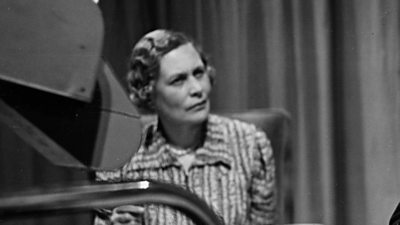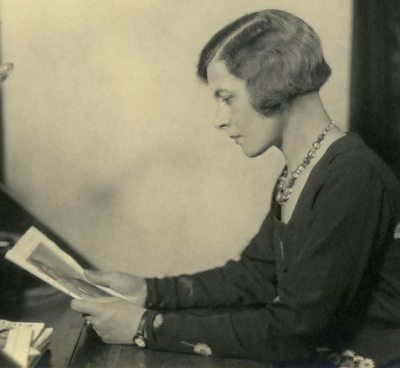
When Hilda Matheson became the 91�ȱ�’s first Director of Talks in January 1927, she was swept into what was arguably the most senior production role in the organisation, an importance that is increasingly being recognised in the public eye and in academic research.
Matheson is an intriguing person to study because much of what we know about her 91�ȱ� role is from sources outside of the 91�ȱ�: the memoirs of her contemporaries like Lionel Fielden or Richard Lambert; the descriptions of Savoy Hill life that she included in the letters to her lover Vita Sackville West; the observations that she made in her 1933 book Broadcasting. But the 91�ȱ�’s Written Archives are also a rich source – if you know where to look.
Matheson has no staff folder, so her 91�ȱ� work needs to be pieced together from a range of documents found in, for example, administrative, management, departmental, programme and contributor files. She is also mentioned in Reith’s diaries and the early staff journal Heterodyne; as Talks Director, she contributed to 91�ȱ� Year Books and Radio Times.
Looking through these sources, it is clear that Matheson quickly developed clear views on the practice and technique of broadcasting. During the period she was Talks Director (she left the 91�ȱ� in early 1932), spoken word programmes – delivered as ‘Talks’ - were always ‘live’. This made it imperative that speakers were well-prepared and also aware of their audience.
To this end, in December 1927, she circulated a new leaflet that offered advice to broadcasters on how best to approach the microphone. Amongst the hints in Broadcast Talks and Lectures: Suggestions to Speakers were how to prepare scripts (as if talking to a friend) and how to talk (avoiding monotonous delivery and not too fast).
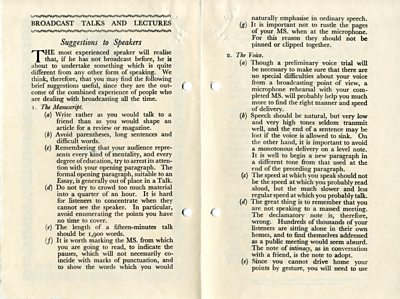
One of the contributors who was sent ‘the little leaflet’ in January 1928, was the economist and sociologist Beatrice Webb (usually known by her married name, Mrs Sydney Webb). This was ahead of a talk she gave on 27 February 1928 entitled ‘Reminiscences of Herbert Spencer’.
How far the leaflet was responsible for Webb’s performance is not known but Matheson was delighted, enthusing to Webb that it was one of the best talks they’d ever had and that Webb was a ‘born broadcaster’. The letter also discloses Matheson’s persuasive attempts to entice Mrs Webb to the studio again, including poetry readings, a suggestion that Webb declined.
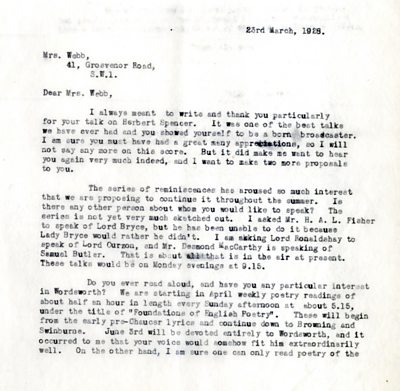
Before joining the 91�ȱ�, Matheson had worked as Political Secretary to Nancy Astor and this may have been how she was first introduced to Beatrice Webb. The role certainly brought her into contact with the small band of female MPs who had been newly elected, alongside Astor.
One of these was Labour’s Margaret Bondfield who Matheson subsequently courted for a number of 91�ȱ� talks. This included an afternoon broadcast for her 1928 series ‘A Woman’s Day’ which was aimed, in particular, at the many women listeners who were at home during the day. As this letter shows, Matheson was also hoping to include a factory worker in the series, although this did not materialise.
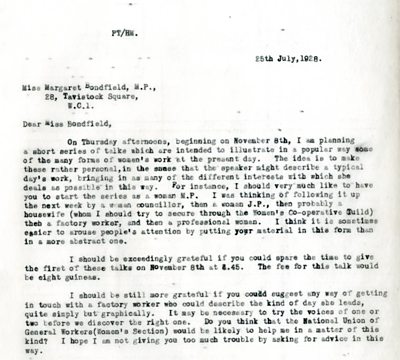
Matheson’s philosophy of broadcasting, which was to bring erudition and a broadening of horizons into even the most modest of homes, is beautifully encapsulated in a 1931 letter to Mary Agnes Hamilton. Hamilton, a writer and politician, had broadcast regularly for Matheson since October 1927 in series such as New Novels, The Week in Westminster and The Month in the North.
In August 1931, she was approached by Matheson to potentially widen her remit into internationalism and although this did not happen, the letter includes an evocative description of the power of radio.

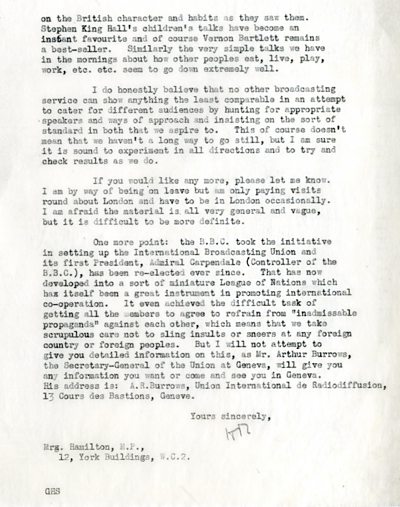
As is evident from the three examples above, Matheson always made wide use of female broadcasters alongside men. This was a calculated decision: whereas male producers might be blind to, or dismissive of women speakers, Matheson actively sought them, as out as an illuminating memo on discussions and debates shows.
In addition to straight talks, the 91�ȱ� also aired topical debates which, Matheson was adamant, should also be carefully rehearsed. This memo from August 1929, as well as giving insights into Matheson’s views on this, reveals her mindfulness about the inclusion of the female voice as she light-heartedly suggests making use of the “plain woman!” alongside the “plain man”.
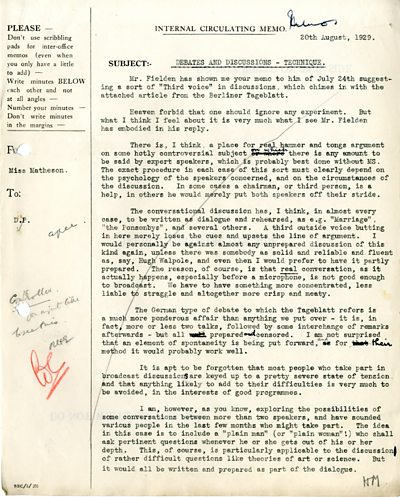
This short blog can only hint at the wealth of material hidden away at the Written Archive Centre in documents and files. There are literally thousands of documents that have the imprint of Hilda Matheson, each one enabling us to uncover a little more of her expansive and crucial 91�ȱ� role.
Biography
Dr Kate Murphy is a Visiting Fellow at the University of Bournemouth. Prior to her academic career, Kate worked at the 91�ȱ� for 24 years, primarily as a producer of Radio 4 Woman's Hour. Her main research interest is women at the 91�ȱ�; her book Behind the Wireless: An Early History of Women at the 91�ȱ� was published in 2016. She is co-curator of the website ‘100 Voices of the 91�ȱ�: Pioneering Women’ and assisted with the research for the 91�ȱ� Radio 4 drama series The Battle of Savoy Hill.
